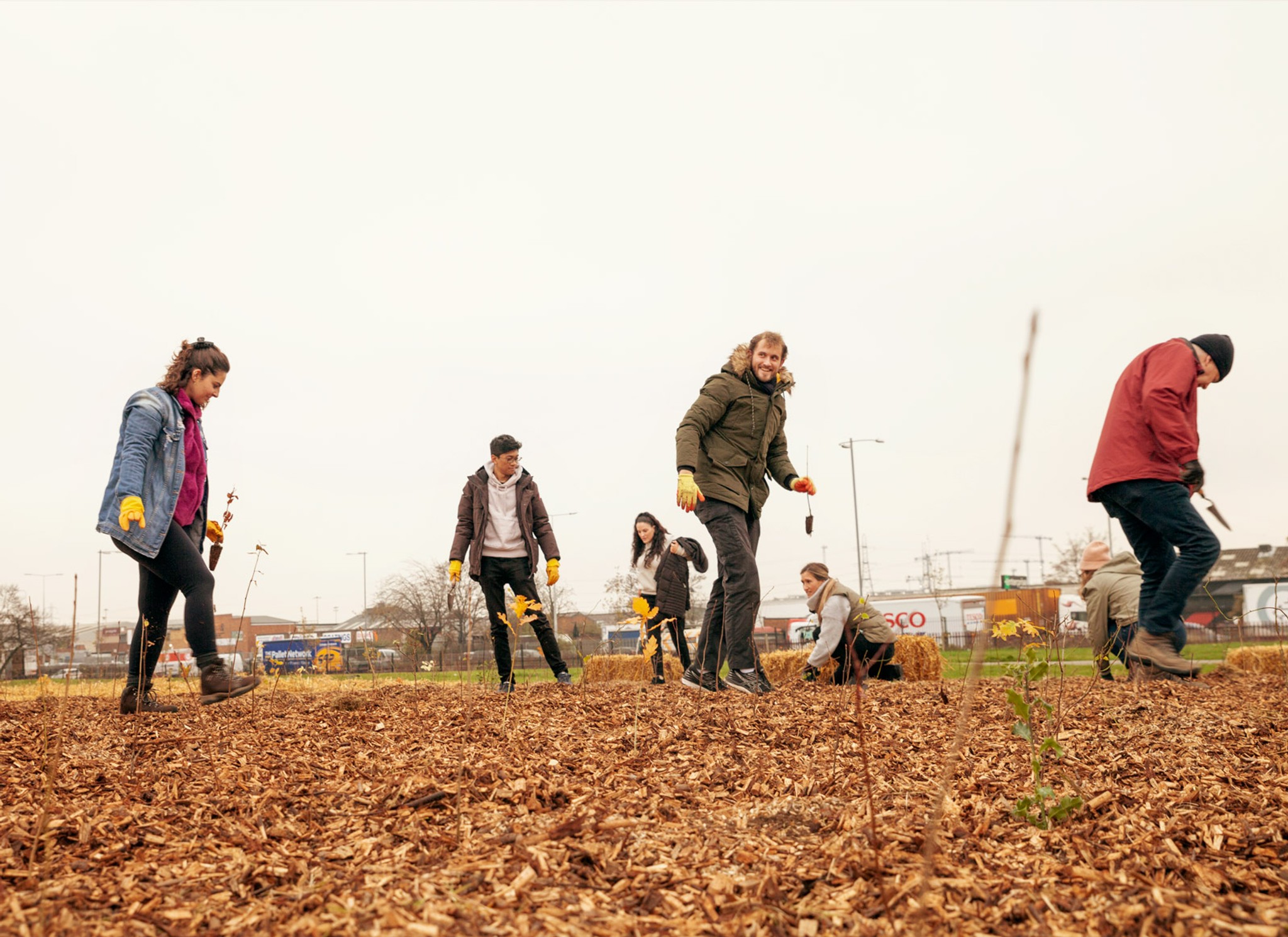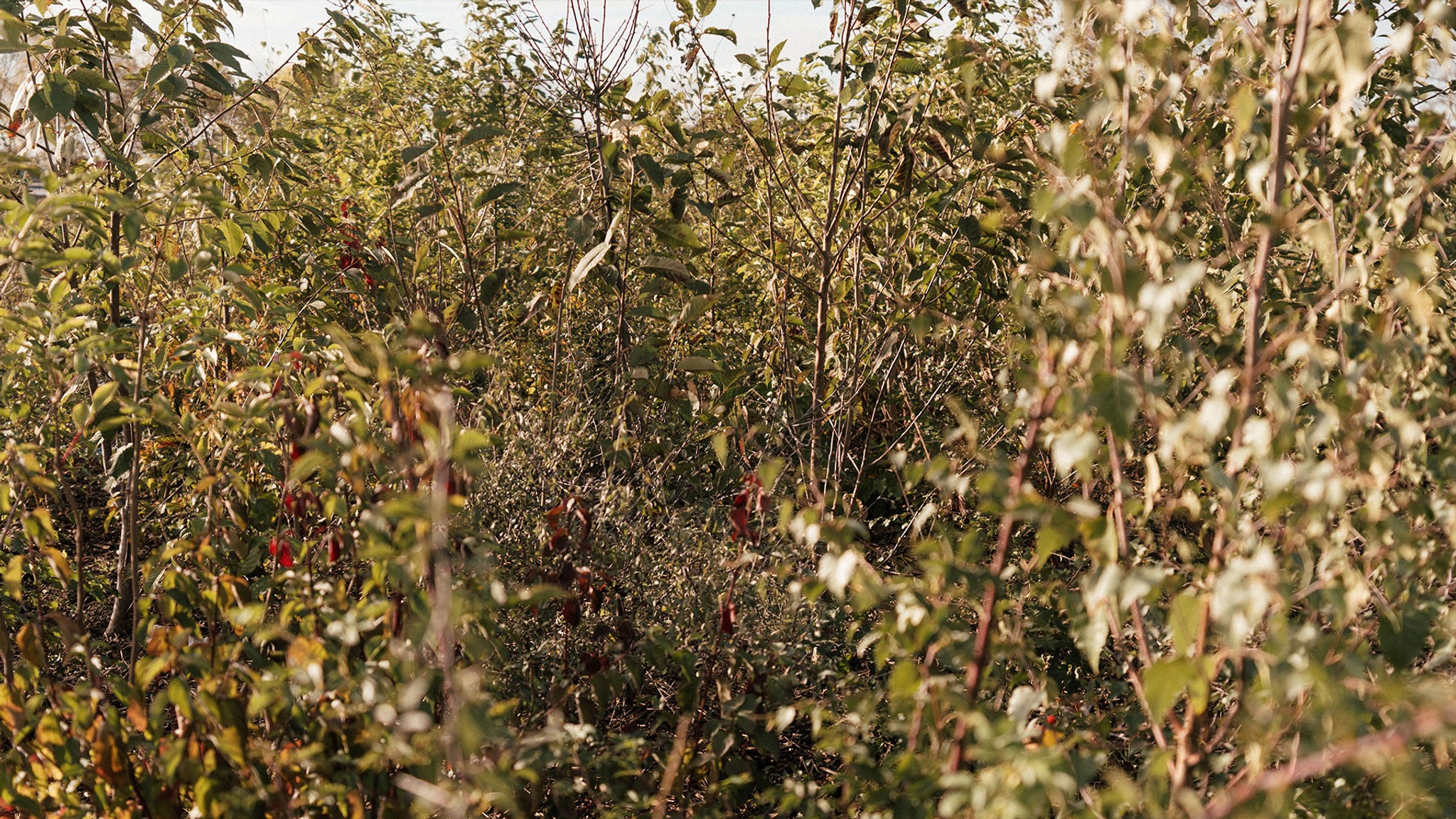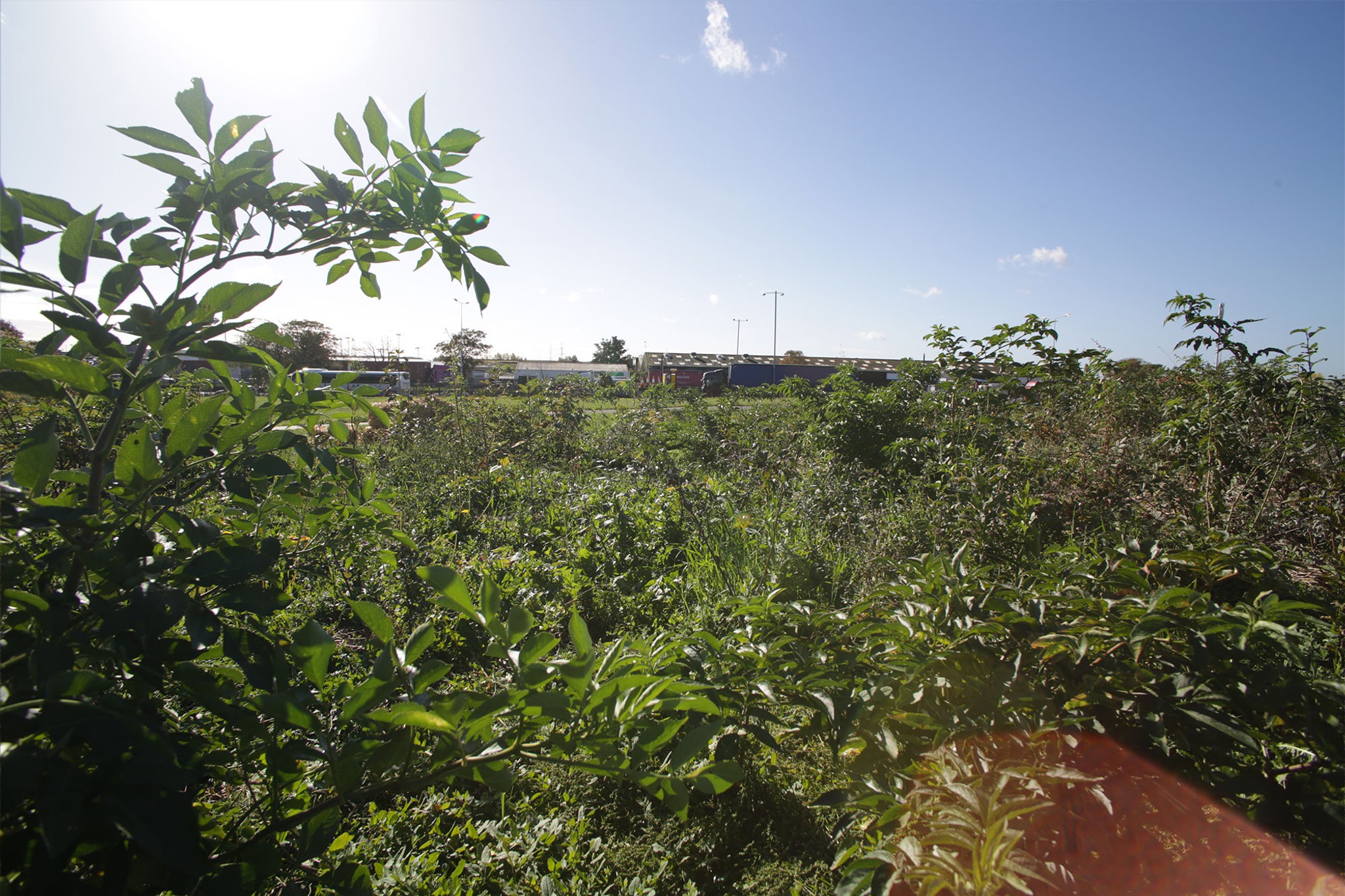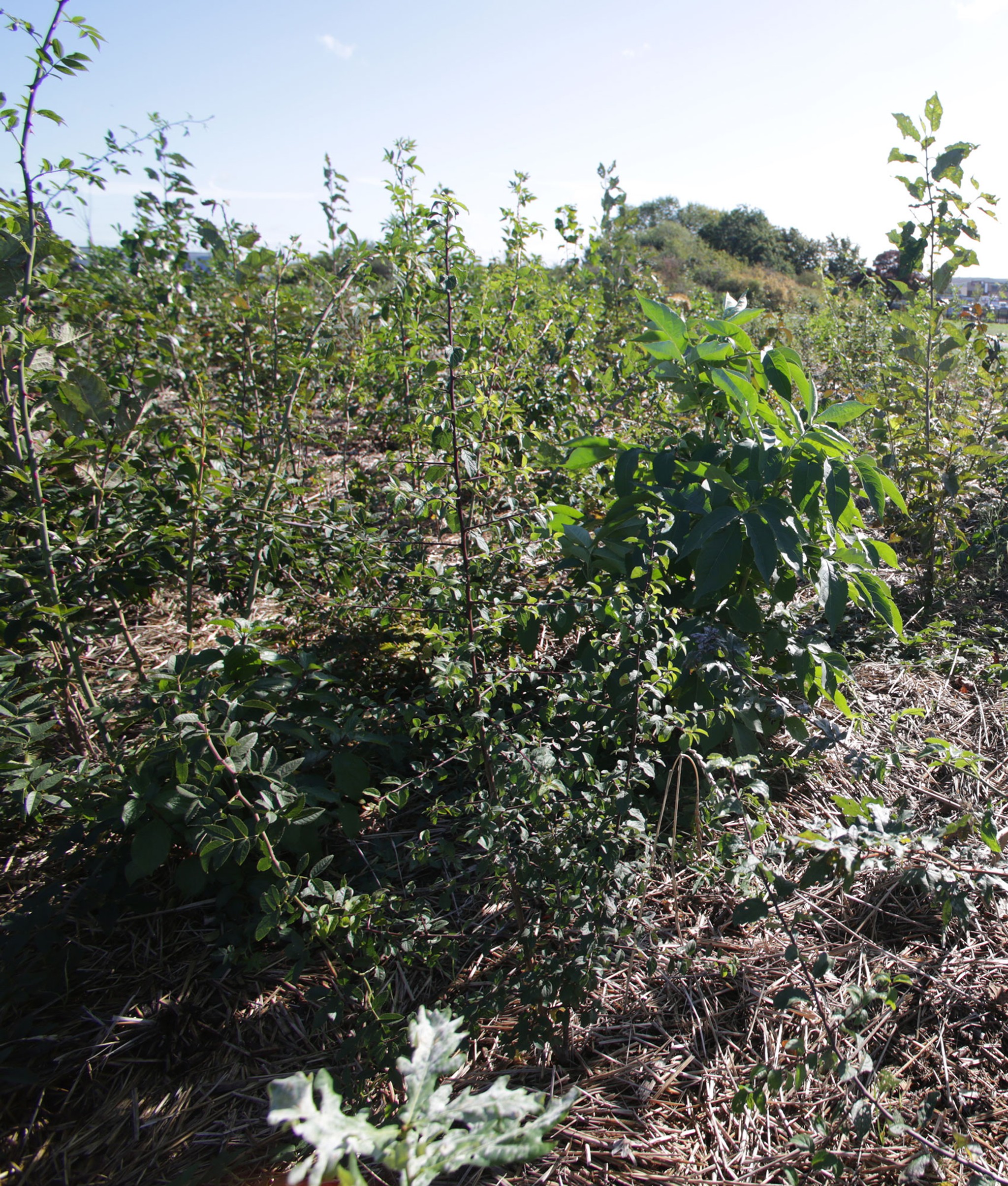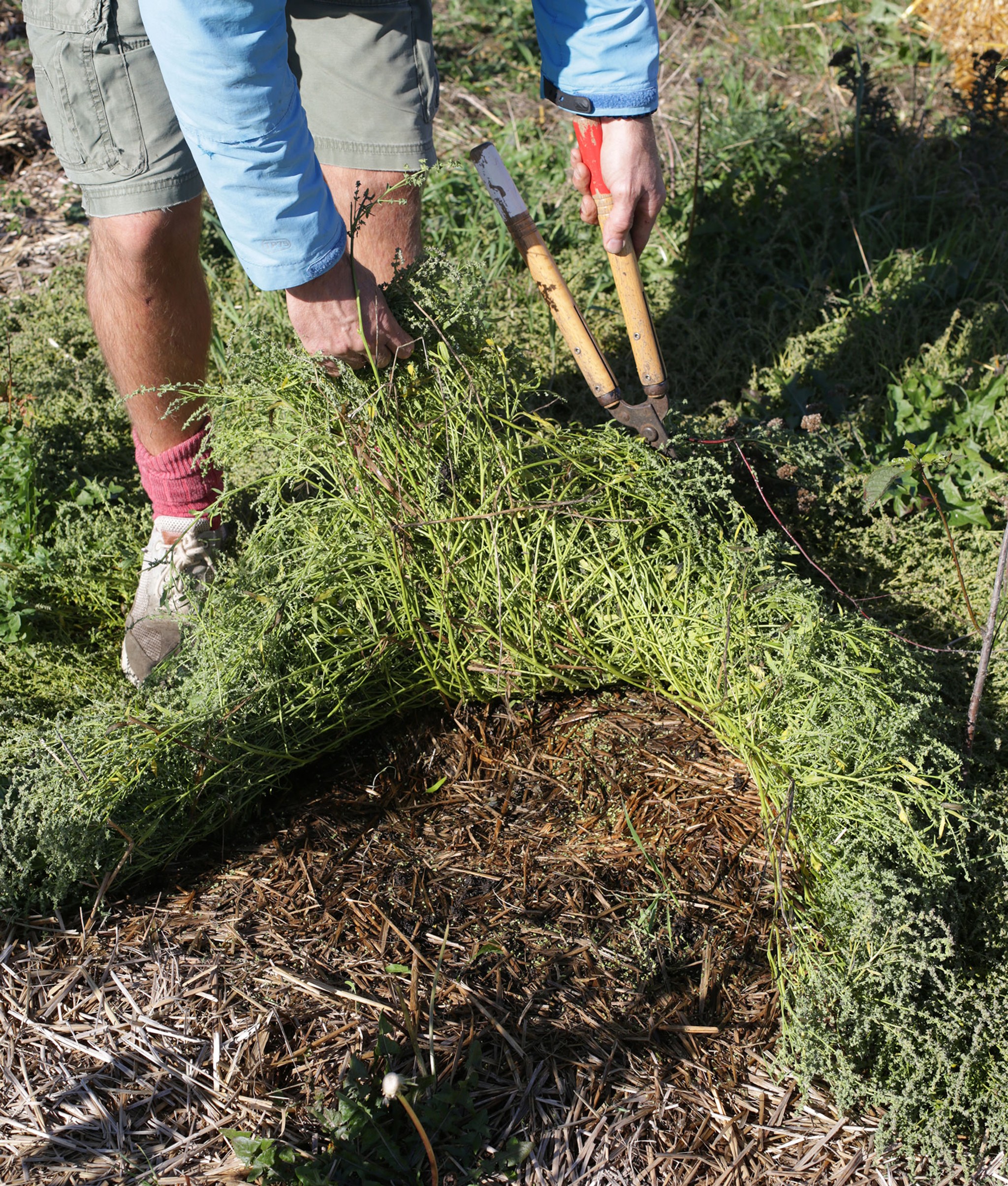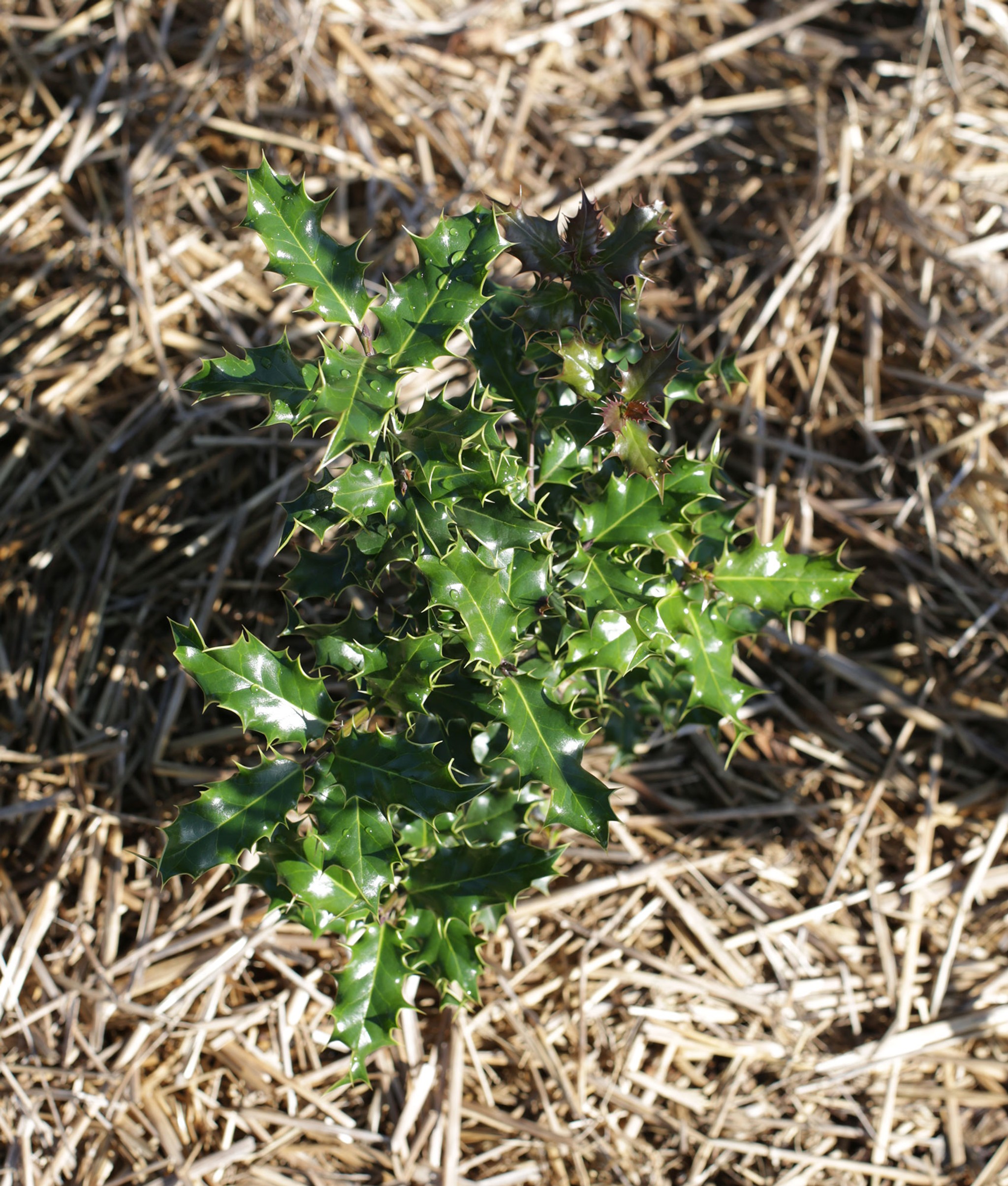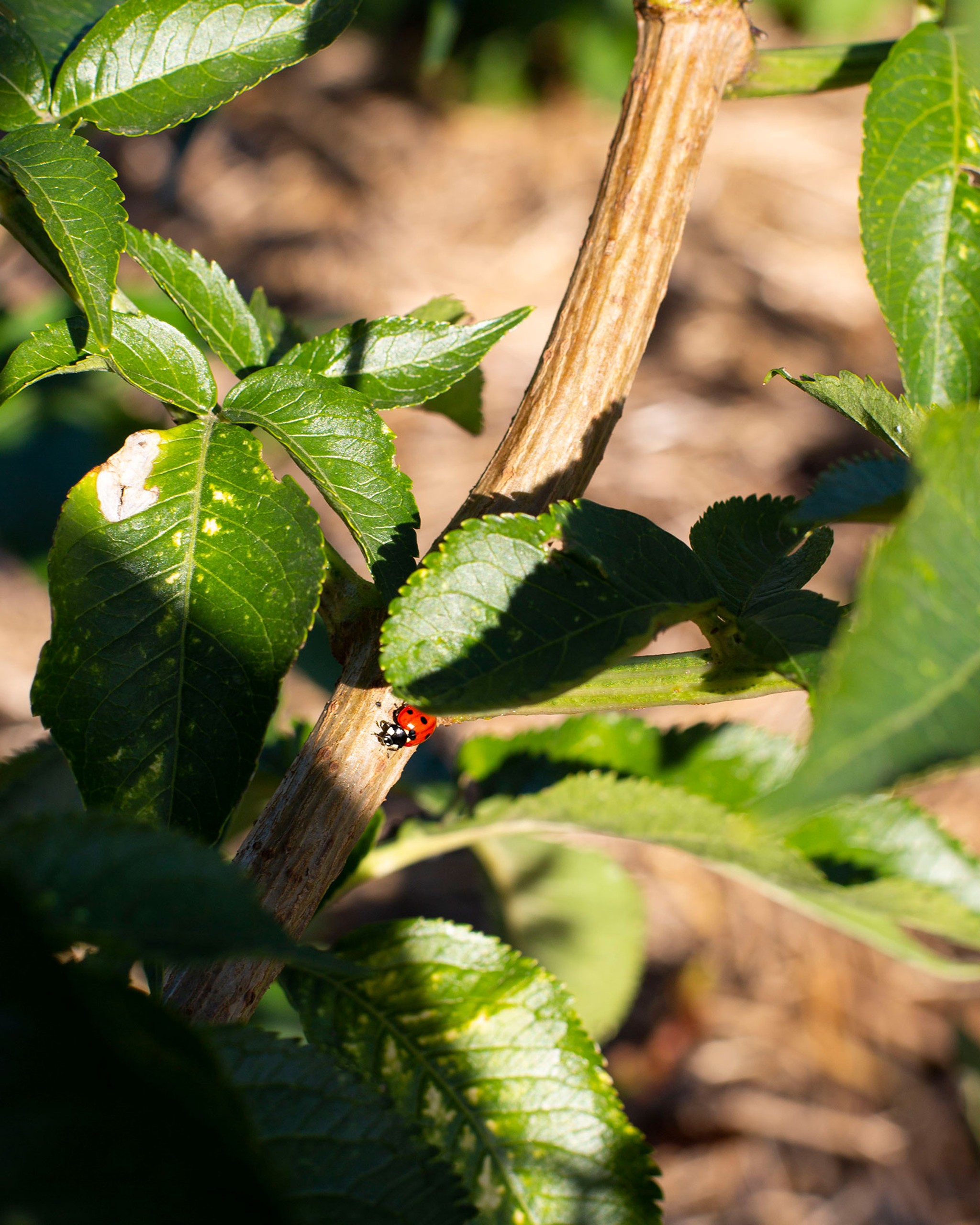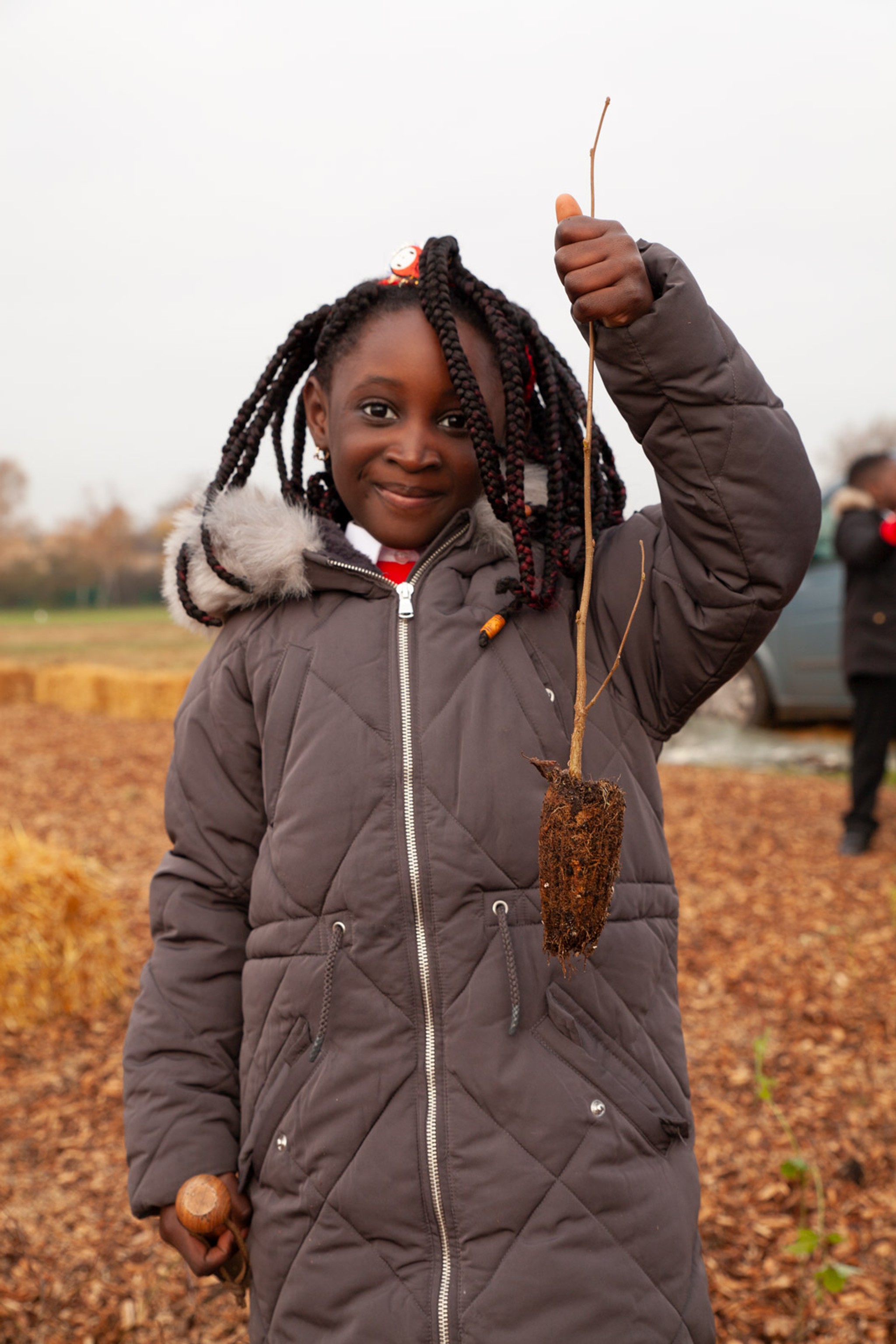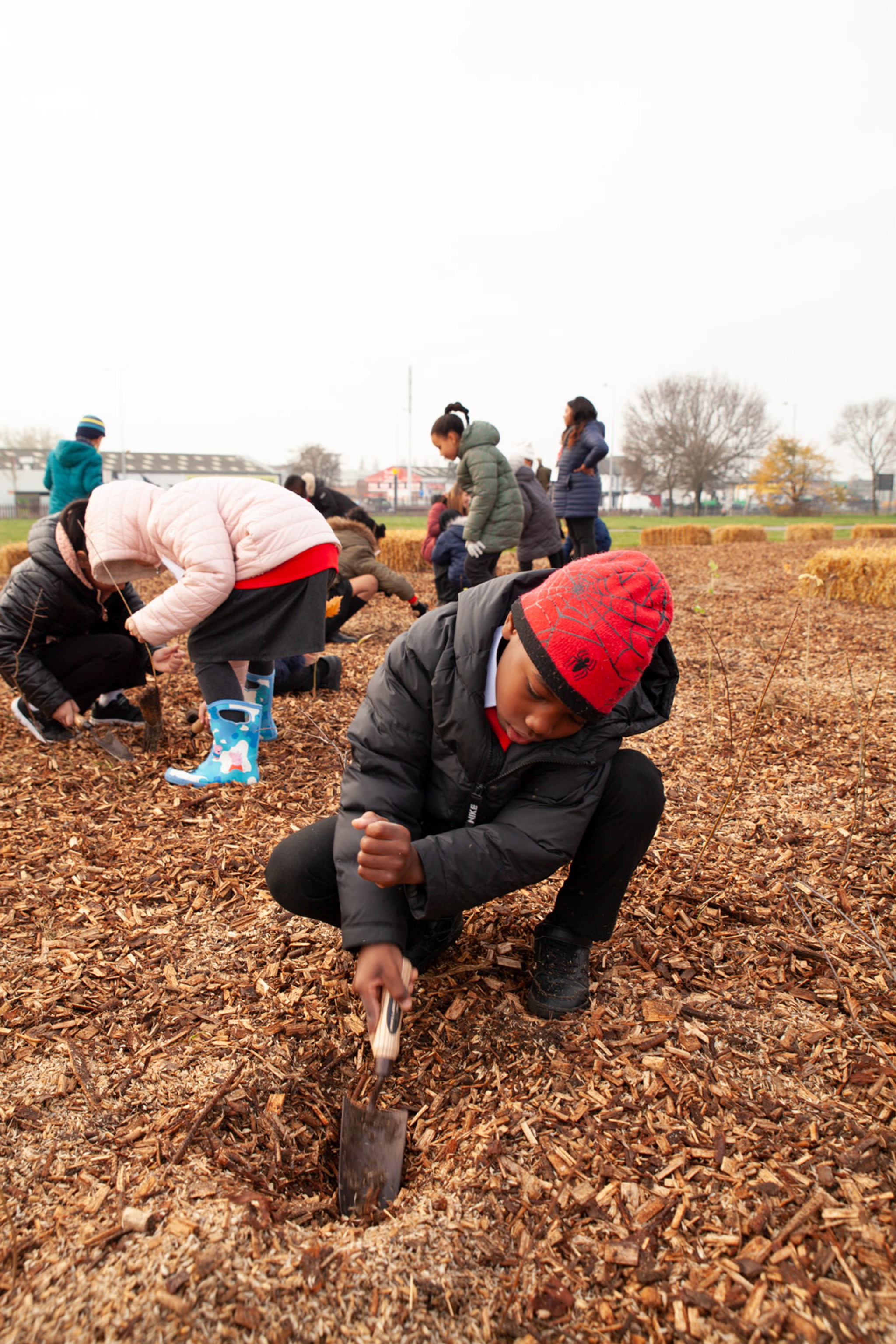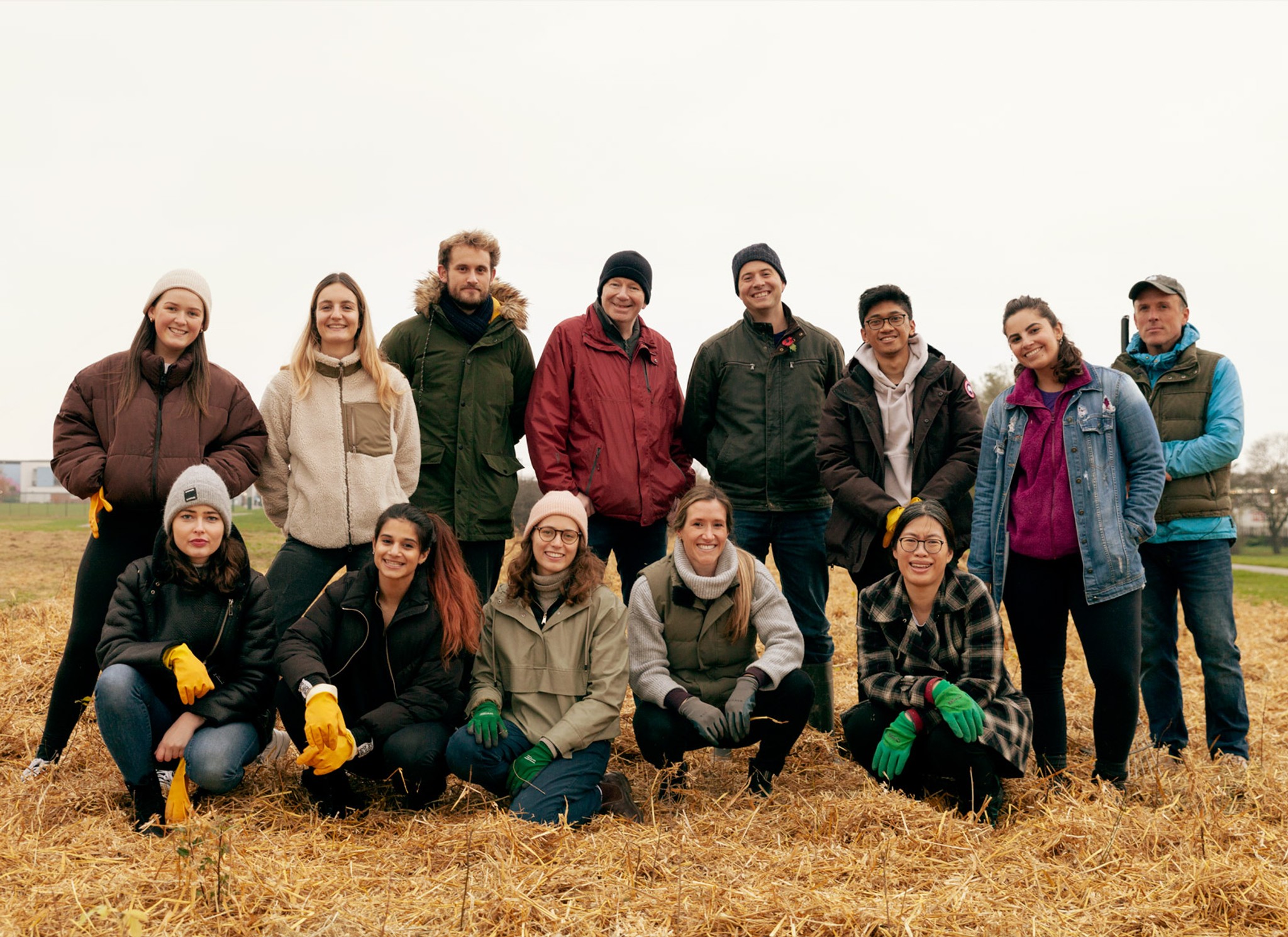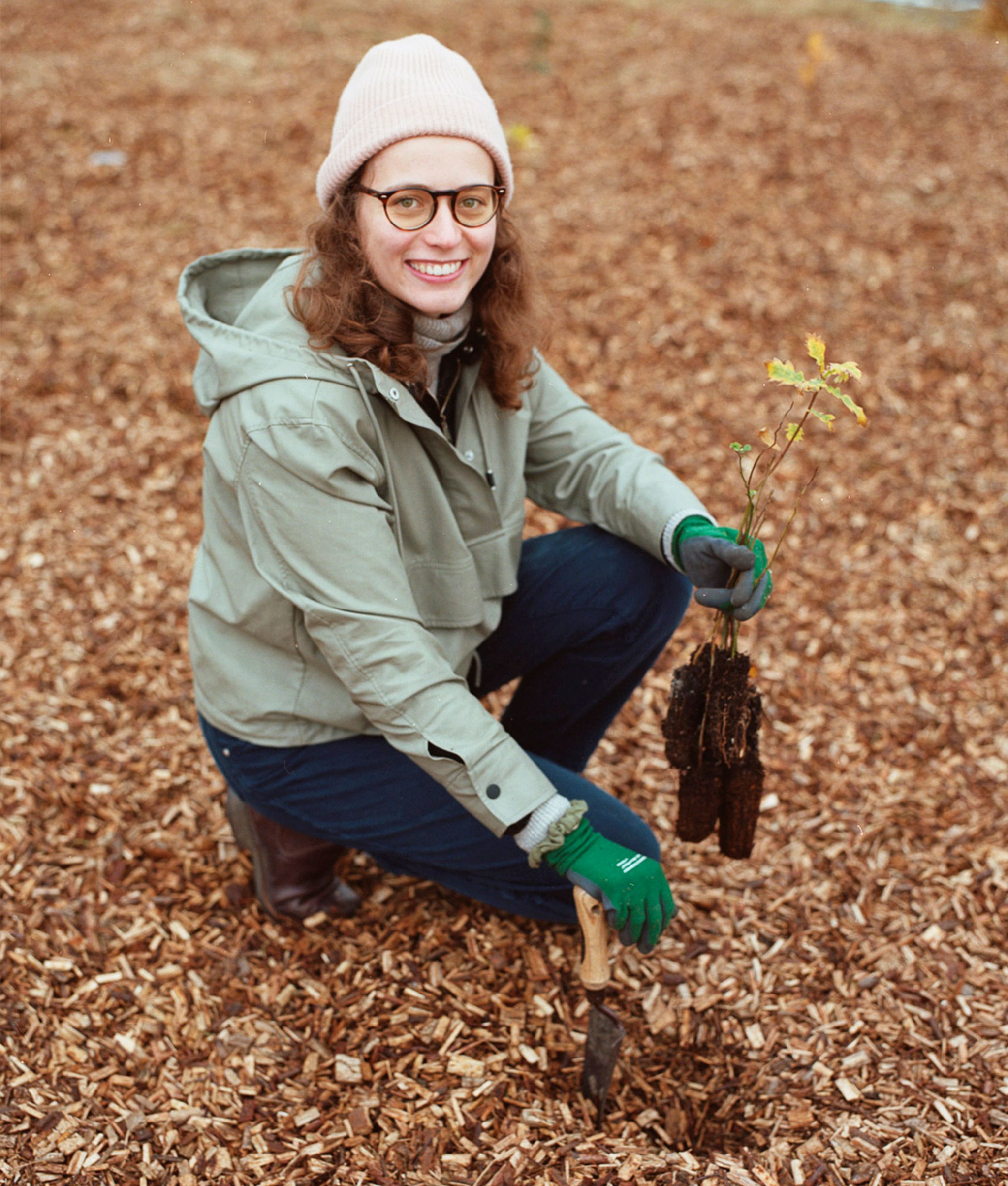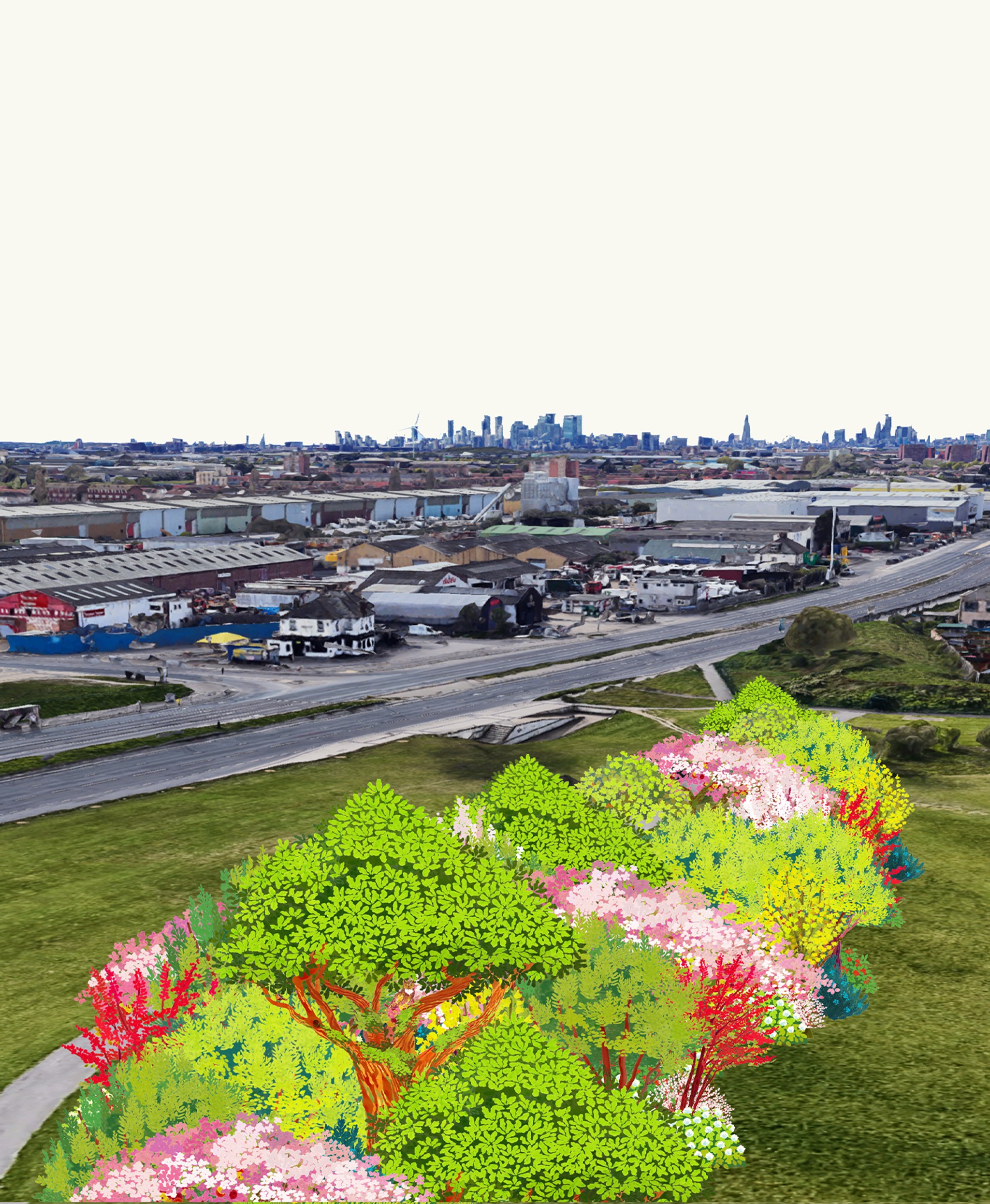Castle Green Forest II
An urban forest to mitigate pollution and bring biodiversity.

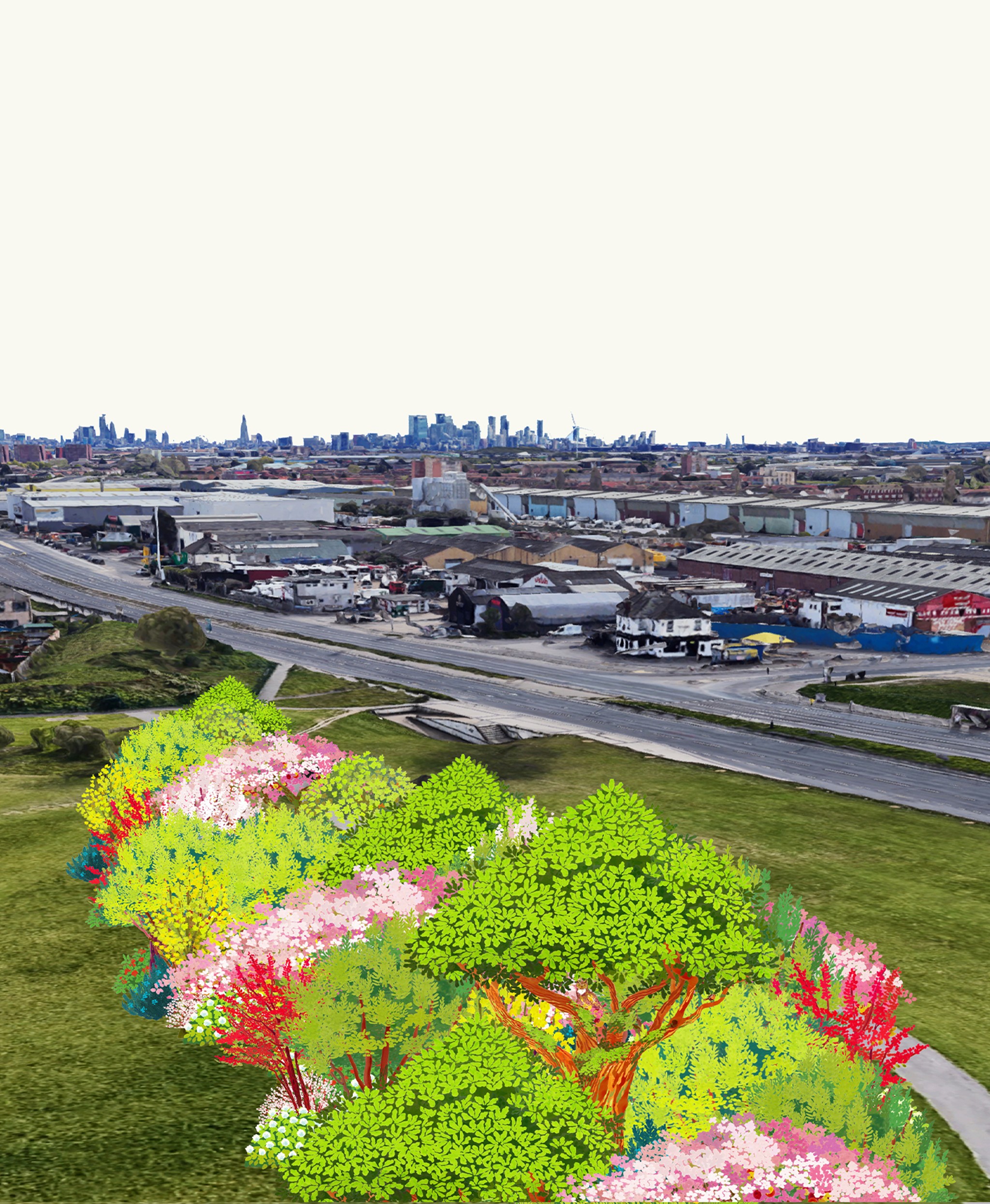
0
Trees
0
Square Meters
0
Native Species
0
Youth Impacted
Self sustaining pocket forest
Planted in 2021, Castle Green II has become a sanctuary for biodiversity in East London. The fast growing elder (Sambucus nigra) and wild cherry (Prunus avium) trees provide a great habitat for the local wildlife, with rabbit warrens and fox dens spotted within the forest. There have even been sightings of fox cubs playing and sunbathing in the adjacent meadow, a heartwarming reminder of the wildlife that shares London as its home.
In 2024, the elder trees produced an abundance of flowers and fruit due to the early season rain and warm sunny days that followed, further supporting biodiversity and providing a food source for birdlife and pollinators.
Despite its successes, the forest has faced challenges in its formative years. Planted in an open space, it is fully exposed to the sun and drying winds from the surrounding field, making it drier than other SUGi forests nearby. However, these conditions have not hindered growth or lushness. In fact, many passers-by have expressed their appreciation for the forest’s positioning, noting how it acts as a natural screen against the busy main road it borders, effectively creating a sound barrier that softens the noise from passing traffic.
Forest Maker
James Godfrey-Faussett
Forest Partner

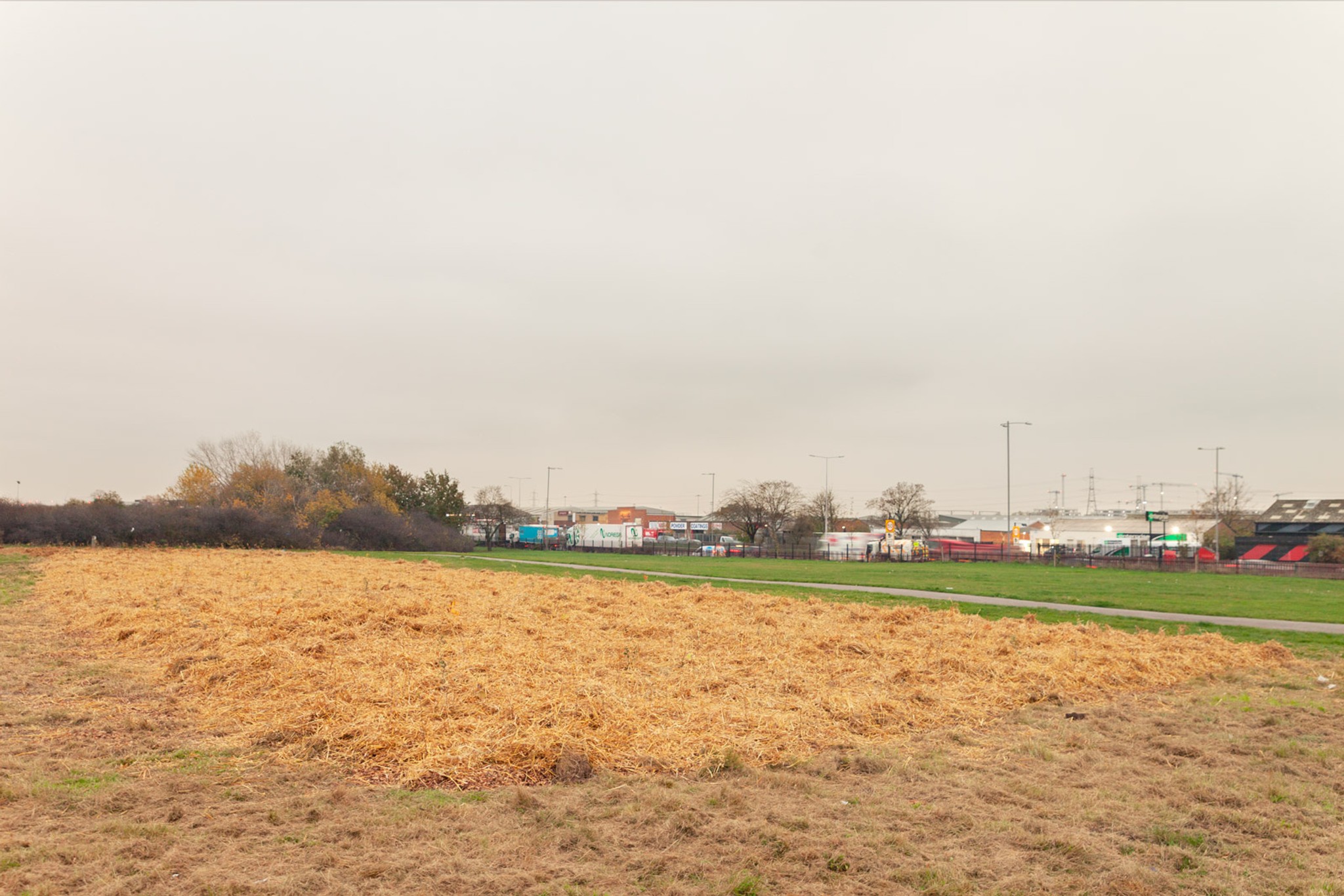

Ecosystem Restored
Final report: 04.11.2024
After approximately three years our SUGi Pocket Forests become self-sustaining. They no longer require human maintenance or watering, and can be handed over to Nature for biodiversity and complexity to naturally develop.
0%
Survival Rate
0
People living within 300 meters
0
kg of potential CO2 sequestration
Biodiversity
Biodiversity is all the different kinds of life you'll find in one area—the variety of animals, plants, fungi, and even microorganisms like bacteria that make up our natural world. Each of these species and organisms work together in ecosystems, like an intricate web, to maintain balance and support life.
0
Potential number of mammals
0
Potential number of birds
0
Potential number of amphibians
“The Castle Green Forest is an example of bringing an urban forest right into the heart of where they are needed most. This area is heavily polluted and lacking biodiversity. The dense forest will go some way to mitigating airborne pollution and provide a peaceful haven for biodiversity to set up home and thrive amongst the urban sprawl.”
James Godfrey-Faussett, SUGi Forest Maker
Forest Report: 2024
0 Years
Forest Age
0%
Survival Rate
0m
Average of Tallest 3 Trees
Biodiversity Notes:
Forest Report: 2023
0 Years
Forest Age
0%
Survival Rate
0m
Average of Tallest 3 Trees
A linear forest block facing the main road and on the edge of the park. One or two warrens have been spotted in the middle of the forest planting area - a great sign that this forest is attracting wildlife and providing habitat. In general, all tree species seem to be thriving with potentially some new saplings that have self-seeded in the center of the forest. There is some patchy undergrowth with some bark mulch/hay still showing.
Biodiversity Notes:
Yarrow, dandelions, and various grass species are starting to self-seed among the planted saplings.
Forest Report: 2022
0 Months
Forest Age
0%
Survival Rate
0m
Average of Tallest 3 Trees
This forest is doing well at 1 year old, having adapted well to the exposed conditions in the park, and is bringing a visible change to this former biodiversity desert. The sounds of bugs and birds can be heard as you stand by the forest, a welcome counterbalance to the busy traffic of the Ripple Road nearby.
Soil formation is good with high levels of visible fungi hyphae that will have a highly beneficial effect on the long-term health of the trees.
The tallest species currently is the wild cherry (Prunus avium) at 160cm, with a girth of 18mm.
Biodiversity Notes:
Many ladybirds (Coccinellidae) have been seen. Rosehips are also present, blooming on the dog rose (Rosa canina). Rosehips are valuable for supporting wildlife and will be a welcome source of food for birds this coming autumn and winter.
Planting: November 2021
